Defenses for Fall 2014
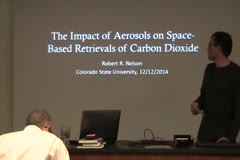
The Potential of Clear Sky Carbon Dioxide Satellite Retrievals
December 12, 2014
Rob Nelson
This work describes an investigation into the potential use of a simplified non-scattering, or "clear sky", retrieval designed to measure the column-averaged dry-air mole fraction of carbon dioxide (XCO2). The initial motivation for this study was primarily a comparison of retrieved aerosol optical depths from the Greenhouse Gases Observing Satellite (GOSAT) measurements to aerosol…
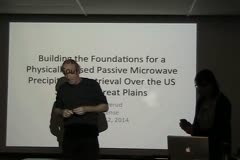
Building The Foundations For A Physically Based Passive Microwave Precipitation Retrieval Over The US Southern Great Plains
November 12, 2014
Sarah Ringerud
The recently launched NASA Global Precipitation Measurement Mission (GPM) offers the opportunity for greatly increased understanding of global rainfall and the hydrologic cycle. The GPM algorithm team has made improvement in passive microwave remote sensing of precipitation over land a priority for this mission, and implemented a framework allowing for algorithm advancement for individual land…
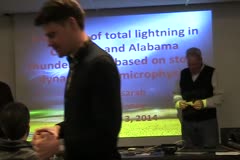
Prediction of Total Lightning Behavior in Colorado and Alabama Thunderstorms From Storm Dynamical and Microphysical Variables
November 03, 2014
Brett Basarab
Thunderstorms impact their environment in a variety of ways, including the production of nitrogen oxides (NOx) by lightning (LNOx). Accurate prediction of total lightning flash rate in thunderstorms is important to improve estimates of LNOx from the storm scale to the global scale. New flash rate parameterization schemes have been developed based on observed…
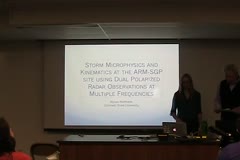
Storm Microphysics and Kinematics at the ARM-SGP site using Dual Polarized Radar Observations at Multiple Frequencies
October 15, 2014
Alyssa Matthews
This research utilizes observations from the Atmospheric Radiation Measurement (ARM) Climate Research Facility at the Southern Great Plains location to investigate the kinematic and microphysical processes present in various types of weather systems. The majority of the data used was collected during the Mid-latitude Continental Convective Cloud Experiment (MC3E), and utilizes the network of…
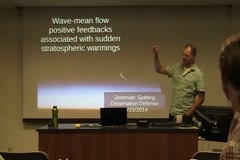
Wave-mean flow positive feedbacks associated with sudden stratospheric warmings
September 16, 2014
Jeremiah Sjoberg
Sudden stratospheric warmings — most often characterized by zonal mean zonal wind easterlies at 60N, 10 hPa — represent the largest dynamical event of the wintertime polar stratosphere. Despite this, the predictability remains low, in part because the forcing of these warming events involves a nonlinear positive feedback between planetary scale waves and the zonal wind of the polar…
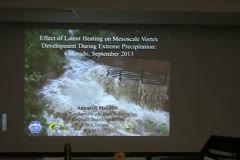
Effect of Latent Heating on Mesoscale Vortex Development During Extreme Precipitation: Colorado, September 2013
August 01, 2014
Annareli Morales
From 9-16 September 2013, a slow-moving cut-off low in the southwestern US funneled unseasonal amounts of moisture to the Colorado Front Range, resulting in extreme precipitation and flooding. The heaviest precipitation during the September 2013 event occurred over the northern Colorado Front Range, producing a 7-day total of over 380 mm of rain. The flash flooding caused over $3 billion in…
